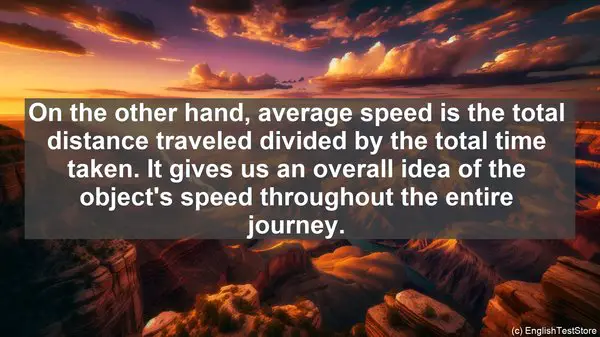Introduction
Welcome to our kinematics series. Today, we’ll be addressing a topic that often causes confusion among students – the commonly confused words in kinematics. Let’s dive right in!
1. Displacement vs. Distance
Displacement refers to the change in position of an object, taking into account its direction. On the other hand, distance is the total path length traveled by an object, irrespective of its direction. While both are related to the position of an object, it’s crucial to understand the distinction between the two.
2. Speed vs. Velocity
Speed is a scalar quantity that measures how fast an object is moving. Velocity, on the other hand, is a vector quantity that not only considers the magnitude of speed but also the direction of motion. So, while speed tells us how fast, velocity tells us how fast and in which direction.
3. Instantaneous Speed vs. Average Speed
Instantaneous speed refers to the speed of an object at a particular instant. It’s like a snapshot of the object’s motion. On the other hand, average speed is the total distance traveled divided by the total time taken. It gives us an overall idea of the object’s speed throughout the entire journey.
4. Acceleration vs. Deceleration
Acceleration is the rate at which an object’s velocity changes. It can be either positive or negative, depending on whether the object is speeding up or slowing down. Deceleration, on the other hand, is a specific type of acceleration where the object is slowing down. So, while all decelerations are accelerations, not all accelerations are decelerations.

5. Scalar vs. Vector
Scalar quantities have only magnitude, such as speed or distance. On the other hand, vector quantities have both magnitude and direction, such as velocity or displacement. Understanding whether a quantity is scalar or vector is essential as it affects how we analyze and calculate various aspects of motion.
6. Position vs. Time Graph vs. Velocity vs. Time Graph
A position vs. time graph shows how an object’s position changes over time. On the other hand, a velocity vs. time graph shows how an object’s velocity changes over time. By analyzing these graphs, we can gain insights into an object’s motion, such as whether it’s moving at a constant speed, accelerating, or at rest.

7. Uniform Motion vs. Non-Uniform Motion
Uniform motion refers to the motion where an object covers equal distances in equal intervals of time. In other words, the object’s speed remains constant. On the other hand, non-uniform motion is when an object’s speed varies. Real-life examples of non-uniform motion include a car in traffic or a person running a marathon.
8. Time of Flight vs. Time of Flight
Time of flight refers to the total time an object is in the air during its trajectory. It’s often used in projectile motion calculations. On the other hand, time of flight refers to the time taken for an object to reach its maximum height during projectile motion. While the terms sound similar, they refer to different time intervals in the same motion.
9. Initial Velocity vs. Final Velocity
Initial velocity is the velocity of an object at the start of its motion. Final velocity, on the other hand, is the velocity of an object at the end of its motion. It’s important to differentiate between the two, especially when calculating quantities like displacement or time taken.
10. Kinematics vs. Dynamics
While both terms are related to the study of motion, they focus on different aspects. Kinematics deals with the description of motion, such as position, velocity, and acceleration. On the other hand, dynamics is concerned with the forces that cause motion. So, while kinematics answers ‘how’ an object moves, dynamics answers ‘why’ it moves.
